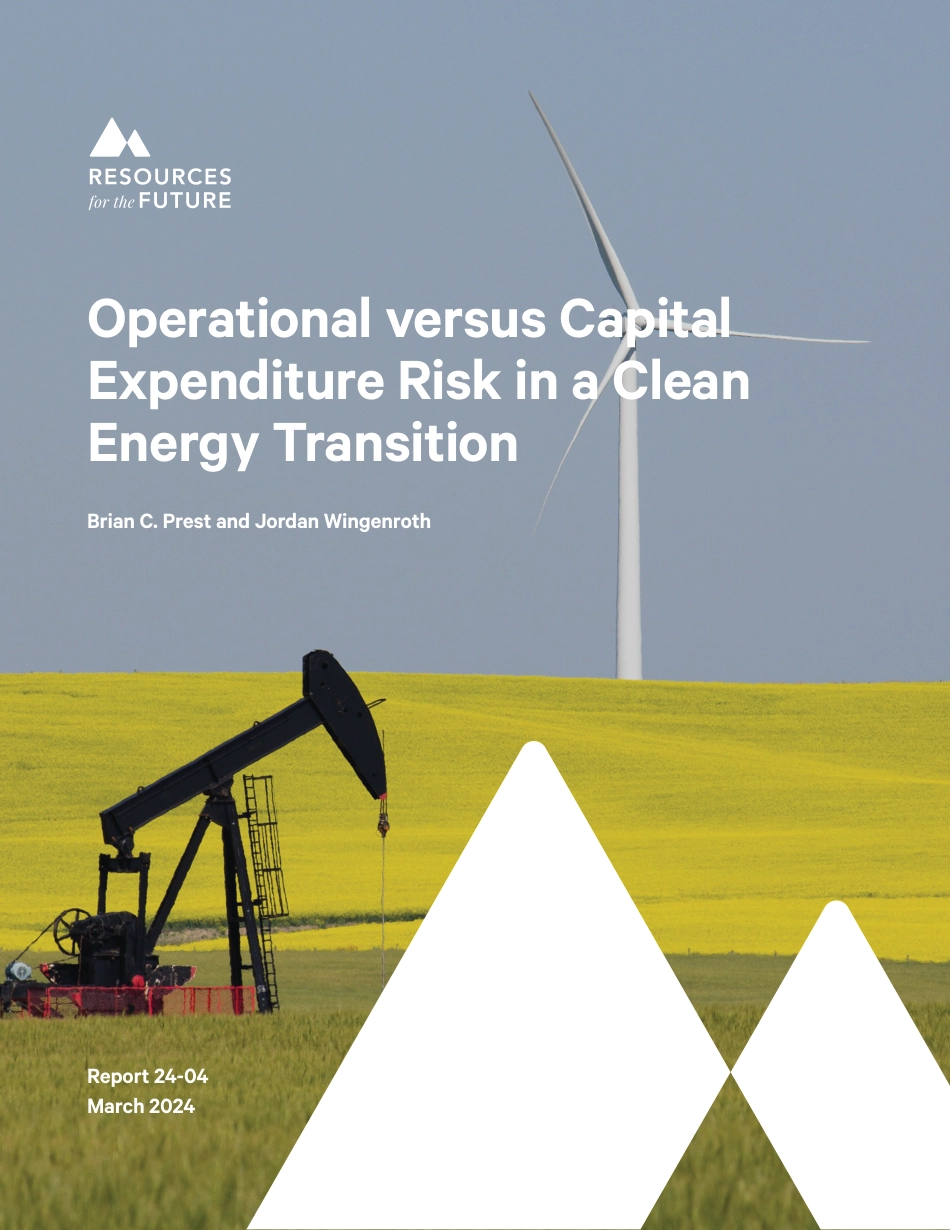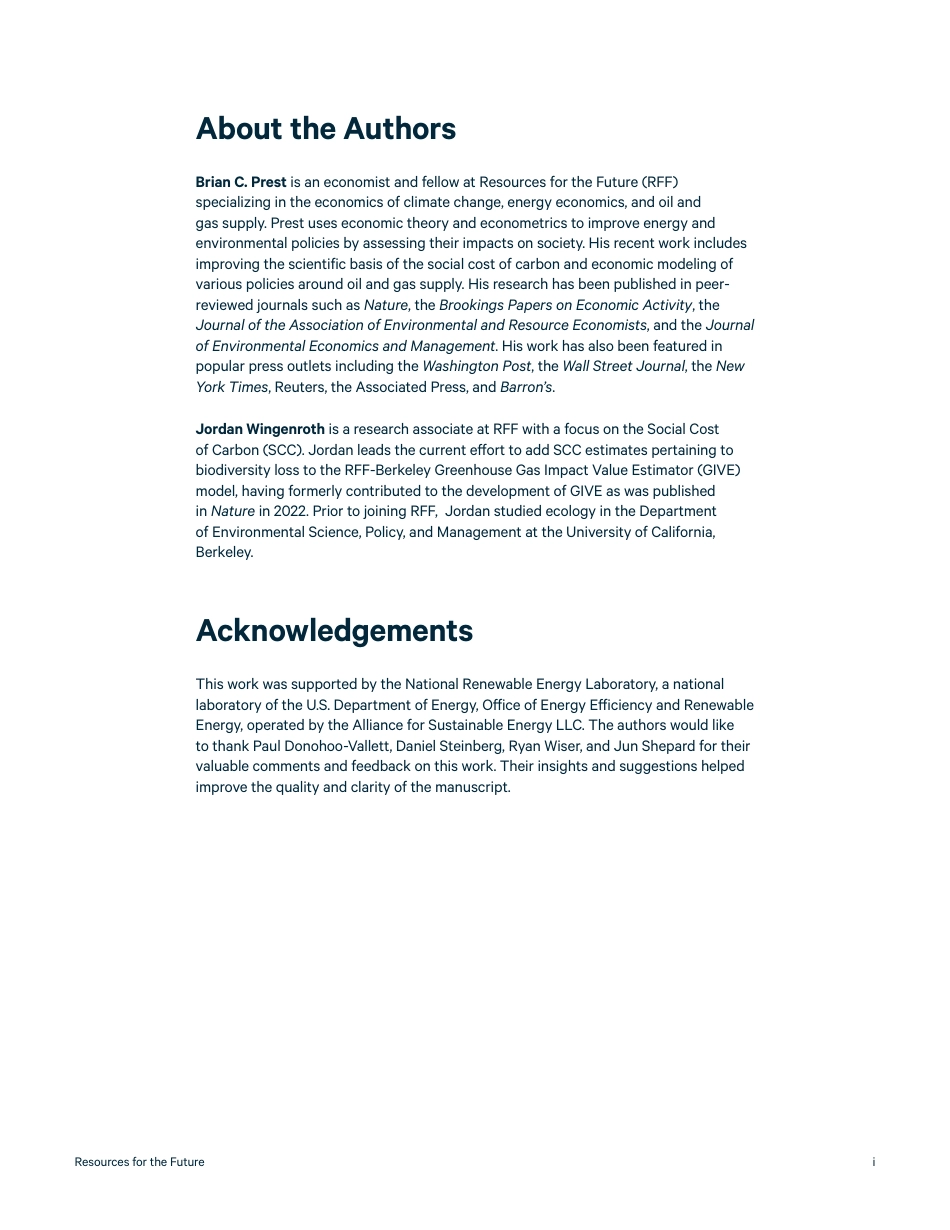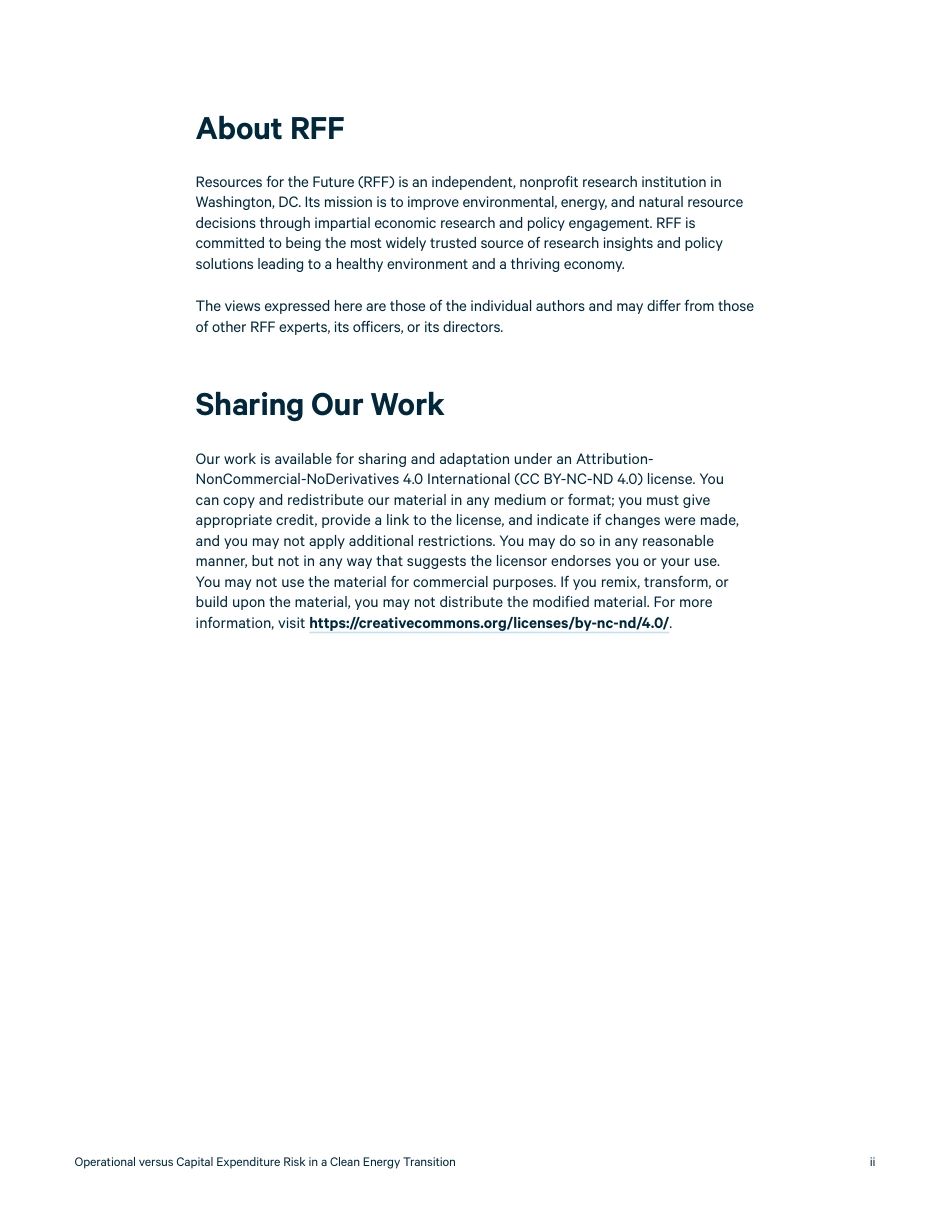OperationalversusCapitalExpenditureRiskinaCleanEnergyTransitionAOperationalversusCapitalExpenditureRiskinaCleanEnergyTransitionBrianC.PrestandJordanWingenrothReport24-04March2024ResourcesfortheFutureiAbouttheAuthorsBrianC.PrestisaneconomistandfellowatResourcesfortheFuture(RFF)specializingintheeconomicsofclimatechange,energyeconomics,andoilandgassupply.Prestuseseconomictheoryandeconometricstoimproveenergyandenvironmentalpoliciesbyassessingtheirimpactsonsociety.Hisrecentworkincludesimprovingthescientificbasisofthesocialcostofcarbonandeconomicmodelingofvariouspoliciesaroundoilandgassupply.Hisresearchhasbeenpublishedinpeer-reviewedjournalssuchasNature,theBrookingsPapersonEconomicActivity,theJournaloftheAssociationofEnvironmentalandResourceEconomists,andtheJournalofEnvironmentalEconomicsandManagement.HisworkhasalsobeenfeaturedinpopularpressoutletsincludingtheWashingtonPost,theWallStreetJournal,theNewYorkTimes,Reuters,theAssociatedPress,andBarron’s.JordanWingenrothisaresearchassociateatRFFwithafocusontheSocialCostofCarbon(SCC).JordanleadsthecurrentefforttoaddSCCestimatespertainingtobiodiversitylosstotheRFF-BerkeleyGreenhouseGasImpactValueEstimator(GIVE)model,havingformerlycontributedtothedevelopmentofGIVEaswaspublishedinNaturein2022.PriortojoiningRFF,JordanstudiedecologyintheDepartmentofEnvironmentalScience,Policy,andManagementattheUniversityofCalifornia,Berkeley.AcknowledgementsThisworkwassupportedbytheNationalRenewableEnergyLaboratory,anationallaboratoryoftheU.S.DepartmentofEnergy,OfficeofEnergyEfficiencyandRenewableEnergy,operatedbytheAllianceforSustainableEnergyLLC.TheauthorswouldliketothankPaulDonohoo-Vallett,DanielSteinberg,RyanWiser,andJunShepardfortheirvaluablecommentsandfeedbackonthiswork.Theirinsightsandsuggestionshelpedimprovethequalityandclarityofthemanuscript.OperationalversusCapitalExpenditureRiskinaCleanEnergyTransitioniiAboutRFFResourcesfortheFuture(RFF)isanindependent,nonprofitresearchinstitutioninWashington,DC.Itsmissionistoimproveenvironmental,energy,andnaturalresourcedecisionsthroughimpartialeconomicresearchandpolicyengagement.RFFiscommittedtobeingthemostwidelytrustedsourceofresearchinsightsandpolicysolutionsleadingtoahealthyenvironmentandathrivingeconomy.TheviewsexpressedherearethoseoftheindividualauthorsandmaydifferfromthoseofotherRFFexperts,itsofficers,oritsdirectors.SharingOurWorkOurworkisavailableforsharingandadaptationunderanAttribution-NonCommercial-NoDerivatives4.0International(CCBY-NC-ND4.0)license.Youcancopyandredistributeourmaterialinanymediumorformat;youmustgiveappropriatecredit,providealinktothelicense,andindicateifchangesweremade,andyoumaynotapplyadditionalrestrictions.Youmaydosoinanyreasonablemanner,butnotinanywaythatsuggeststhelicensorendorsesyouoryouruse.Youmaynotusethematerialforcommercialpurposes.Ifyouremix,transform,orbuilduponthematerial,youmaynotdistributethemodifiedmaterial.Formoreinformation,visithttps://creativecommons.org/licenses/by-nc-nd/4.0/.ResourcesfortheFutureiiiAbstractThisreportanalyzesthedifferencesbetweenriskprofilesposedbyfossilassets,suchasnaturalgaspowergenerationandgas-poweredvehicles,andthoseof“green”alternatives,suchaswindpowerandelectricvehicles.Fossilassetstendtobeexposedprimarilytouncertaintyinoperationalexpenditures(OPEX)suchasfuelprices,whereasgreenassetstendtobeexposedprimarilytouncertaintyincapitalexpendi...



 VIP
VIP VIP
VIP VIP
VIP VIP
VIP VIP
VIP VIP
VIP VIP
VIP VIP
VIP VIP
VIP VIP
VIP